Why Don’t Windshields Shatter?
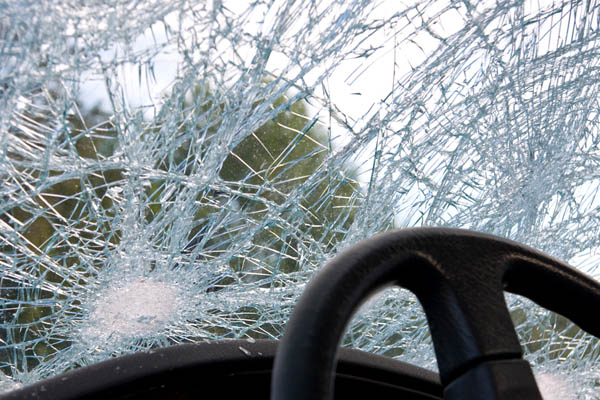
At Liberty AutoGlass, we understand that a windshield is more than just a piece of glass—it’s a critical safety feature of your vehicle. This article explores the advanced technologies and durable materials that help prevent windshields from shattering upon impact. Our commitment at Liberty AutoGlass is to provide top-notch auto glass services that adhere to the highest safety standards, ensuring that every windshield we install or repair contributes to your vehicle’s safety and your peace of mind.
Why Windshields Don’t Shatter Easily
Contents
Keep reading to explore why windshields don’t shatter and why this is vital for your safety on the road.
The Basics of Auto Glass
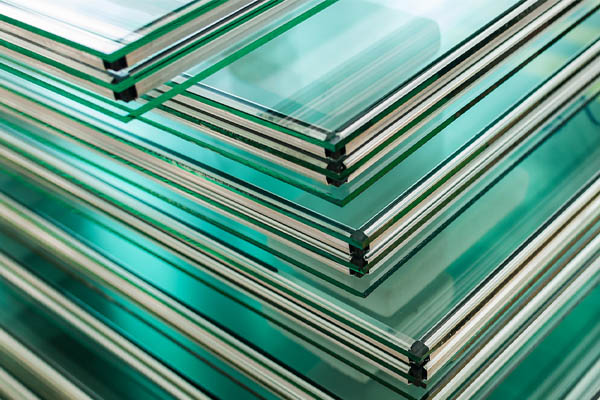
Understanding the different types of glass used in vehicles is key to appreciating their role in safety and functionality. There are primarily two types of glass used in the automotive industry: tempered glass and laminated glass.
- Tempered Glass: This type of glass is heat-treated to increase its strength compared to normal glass. Upon impact, it shatters into small, blunt pieces that are less likely to cause injury, making it ideal for side and rear windows.
- Laminated Glass: This type of auto glass is used primarily for windshields, consists of two glass layers bonded with a plastic interlayer. This construction allows the glass to crack upon impact but remain held together by the interlayer, greatly reducing the risk of objects penetrating the glass and injuring passengers.
The evolution of auto glass has closely paralleled advancements in vehicle safety standards. Initially, auto glass was designed merely to shield passengers from wind and debris. However, over the decades, significant advancements have been made to enhance the safety features of auto glass, driven by both technological advancements and increased regulatory standards, ensuring better protection for passengers in accidents.
Laminated Glass Technology
Laminated glass is constructed using a precise and controlled process that bonds two sheets of glass with a layer of polyvinyl butyral (PVB) in between. This process begins with the selection of high-quality glass, which is cut to size and thoroughly cleaned to ensure perfect adhesion. The glass sheets and the PVB are then assembled in a clean environment to prevent any impurities from being trapped between the layers.
Layering with Polyvinyl Butyral (PVB)
The central element of laminated glass is the polyvinyl butyral (PVB) layer, which is sandwiched between the two glass sheets. This plastic layer is not only tough but also flexible, providing a critical cushioning effect. During the lamination process, this assembly is subjected to heat and pressure inside an autoclave, which binds the layers into a single, solid structure.
Enhanced Safety Properties
The inclusion of PVB is pivotal for the safety features of laminated glass. Upon impact, the glass may crack, but the pieces remain adhered to the PVB layer, preventing them from shattering and causing injury. This characteristic is crucial in preventing ejections during accidents and adding structural integrity to the vehicle’s roof. Furthermore, PVB also provides sound insulation and blocks 99% of ultraviolet (UV) rays, adding comfort and protection for passengers.
Tempered Glass Technology
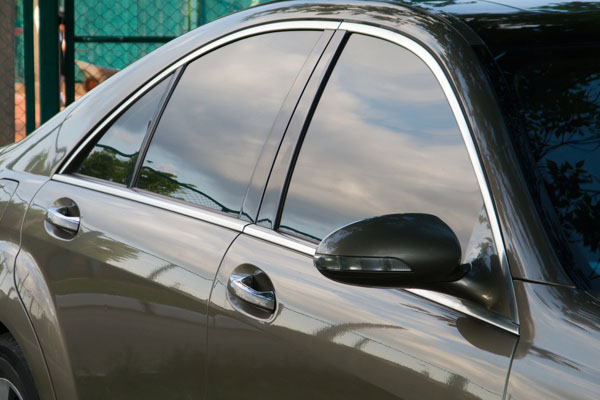
Tempered glass, strengthened through controlled thermal or chemical treatments, is predominantly used for vehicle side and rear windows due to its enhanced strength.
Manufacturing Process
The tempering process involves heating the glass to over 600 degrees Celsius and then rapidly cooling it. This modifies its internal structure, increasing its toughness and altering how it shatters upon impact.
Safety Features
When broken, tempered glass crumbles into small, blunt pieces, reducing injury risk during accidents, which is a significant advantage over traditional glass.
Comparison with Laminated Glass
Unlike laminated glass, which is designed to hold together when shattered and is used for windshields, tempered glass is ideal for other vehicle windows where complete visibility post-impact is less critical. It provides quick clearance of window openings in emergencies, whereas laminated glass maintains visibility and barrier integrity during impacts.
How Windshields Stay Intact
Windshields are engineered to resist shattering and protect passengers during collisions. The key to their resilience lies in their construction: a layer of polyvinyl butyral (PVB) sandwiched between two sheets of glass. This design is specifically crafted to withstand impacts and maintain visibility.
Bonding Process and Impact Absorption
The bonding process that adheres the PVB layer to the glass panes is crucial. Under heat and pressure, the PVB becomes a clear, adhesive layer that binds strongly with the glass. In the event of an impact, the PVB layer absorbs energy and distributes the force over a larger area, reducing the likelihood that the glass will shatter. Instead, the glass may spiderweb or crack, but the pieces remain adhered to the PVB, preventing sharp debris from causing injuries.
Real-Life Safety Contributions
Real-life incidents underscore the effectiveness of laminated windshields. For example, during a rollover accident, a windshield might crack under the stress but will typically hold together, keeping the cabin structure intact and preventing the roof from caving in. In frontal collisions, windshields can act as a barrier to objects from outside, like debris from a truck spill, ensuring they don’t penetrate into the vehicle and harm passengers. These scenarios highlight how modern windshield technology continues to evolve in enhancing vehicular safety.
Windshield Testing and Standards
Windshields are governed by stringent safety standards from organizations like ANSI in the U.S. and ISO internationally. These standards ensure that windshields provide necessary safety and durability.
To meet these standards, windshields are subjected to various tests that measure their impact resistance and ability to withstand harsh conditions.
Continuous improvements in standards have led to windshields that are not only stronger but also significantly enhance vehicle safety through increased durability.
Innovations in Windshield Safety
Recent years have seen significant advancements in windshield technology, enhancing both safety and functionality. Manufacturers are increasingly integrating sophisticated features that extend beyond traditional expectations of durability and clarity.
Integration of Advanced Technologies
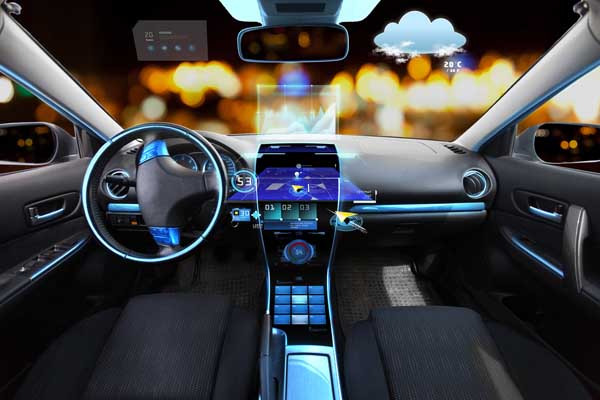
Modern windshields are often equipped with technologies such as heads-up displays (HUDs), which project important navigation and vehicle speed information directly onto the glass, allowing drivers to keep their eyes on the road. Additionally, windshields are incorporating sensors that are integral to advanced driver-assistance systems (ADAS), such as automatic braking and lane-keeping assist. These features depend on clear and precise sensor readings through the glass. Furthermore, many windshields now offer UV protection, filtering out harmful ultraviolet rays and enhancing passenger comfort and safety.
Future Trends in Windshield Technology
Looking ahead, the future of windshield technology promises even more innovative developments. Researchers are exploring new materials that can adapt their tint based on sunlight exposure and temperature changes, improving visual comfort and energy efficiency. Another exciting frontier is the integration of augmented reality (AR), which could overlay critical information about road conditions and navigation onto the windshield, creating a fully immersive driving experience. These advancements are poised to redefine the role of the windshield in automotive design and safety.
Importance of Professional Windshield Installation & Maintenance
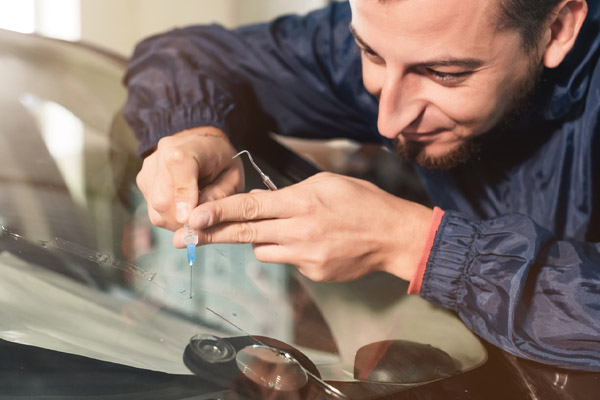
Improper installation of a windshield can significantly compromise its integrity, leading to potential safety risks. A poorly installed windshield may not adhere correctly to the vehicle’s frame, reducing its ability to provide structural support in a collision. This can result in the windshield detaching during an accident, which can severely jeopardize passenger safety.
Role of Professional Auto Glass Services
Professional auto glass services, such as those provided by Liberty AutoGlass, are crucial in ensuring that windshields are installed correctly and meet all safety standards. Experienced technicians follow precise installation protocols, using high-quality materials and adhesives that ensure a secure bond between the windshield and the vehicle. This attention to detail is essential for maintaining the windshield’s role as a critical safety feature.
Tips for Windshield Maintenance

Regular maintenance and inspection of your windshield are key to ensuring ongoing safety and performance. Here are a few tips:
- Inspect for Damage: Regularly check your windshield for chips, cracks, or other signs of damage. Even small imperfections can weaken the glass and should be repaired promptly.
- Clean Properly: Use appropriate cleaning agents and soft cloths to avoid scratching the glass. Avoid slamming doors as the vibrations can stress the windshield.
- Address Issues Early: If you notice any issues, such as leaks or strange noises, have your windshield inspected by a professional immediately. Early intervention can prevent small problems from becoming major safety hazards.
Conclusion
Windshields are designed to resist shattering thanks to advanced engineering and the use of laminated glass technology. This crucial feature not only protects passengers from injury but also maintains the structural integrity of the vehicle during accidents.
Choosing high-quality auto glass services is essential for ensuring that your windshield performs its protective role effectively. Staying informed about the latest advancements in auto glass technology can help you make the best decisions for your safety. Trusting experts like Liberty AutoGlass ensures that your vehicle’s windshield is installed and maintained to the highest standards, providing peace of mind on the road.
For Superior Auto Glass Repairs, Call Liberty AutoGlass

Liberty AutoGlass offers auto glass repair using the highest quality materials and the most advanced auto glass technology to repair your auto glass correctly and quickly. We offer mobile services so we can repair your damaged auto glass at the convenience of your home or office. This means that we come to wherever your vehicle is parked, and you can go about your day as you would normally. We fix windshields, back glass, door glass, vent glass, and quarter glass. We also can handle your insurance claim from start to finish, making the process easier for you! Call Liberty AutoGlass today to find out more!
Contact us today or give us a call at (610) 377-7787 or (877) 90-GLASS if you have any questions. Click here the link to view our complete mobile auto glass service area in Pennsylvania.

Related Articles:
- Fall Driving Safety Tips
- Red Flags: Signs to Look Out For a Faulty Front Windshield Installation
- Should I Take The Car To The Shop Or Have Mobile Windshield Replacement?
- Auto Glass Repair & Replacement Myths: Debunking Common Misconceptions Surrounding Auto Glass Services
- Exploring Different Types of Auto Glass Repairs: Resin Injection, Crack Filling, & More